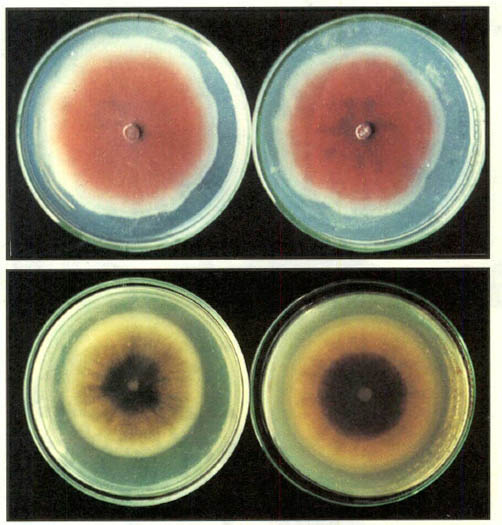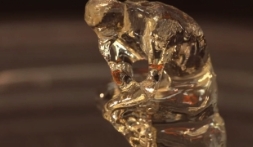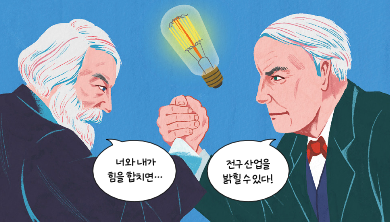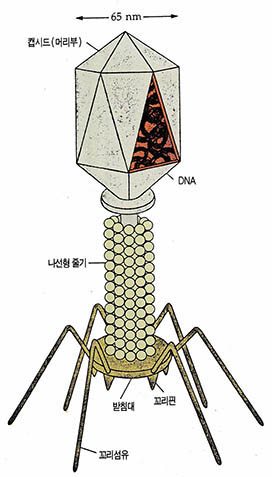IBM은 매해초 ‘Next 5 (Prospective Technologies) in 5’라는 목록을 발표한다. 올해부터 다음 5년 간 각광받을 과학기술을 함께 살펴보자.
1. 3D Chatting(telepresence) : Recent advances in 3D cameras and movies predict that holography chat will be possible soon. Already, the University of Arizona has unveiled a system that can transmit hologra phic images in near-real-time. It is also predicted that 3D visualization could be applied to data, allowing researchers to ‘step inside’ software programs, computer models, or pretty much anything else that is limited by a simple 2D screen.
2. Air-powered batteries : Lithium-air batteries are already in the works, and batteries that use air to react with energy-dense metal will result in smaller, lighter rechargeable batteries that last ten times longer than today’s lithium-ion variety. Also scientists are trying to reduce the amount power required for devices such as cellphones to less than 0.5volts per transistor. Then, they could be powered via energy conversion like kinetic wrist watches that get their power from the user’s arm movements. No need for batteries.
3. Personal sensors : Currently most scientific data are obtained by scientists, who have to go out in the field and set up sensors. Within five years, a lot of that data could be gathered and transmitted by sensors in our phones, cars, wallets, computers, or just about anything else. Such sensors could be used for all kinds of scientific researches from fighting global warming to tracking invasive species.
4. Customized commute-system : Ubiquitous sensors will gather information on traffic conditions, road construction, public transit schedules, and other factors that affects your commute. When you inquire about the quickest way of getting from A to B, computer systems will take into account all the variables unique to that day and time, combine them with mathematical models, and advise a route. Also by utilizing such data, traffic control systems could learn traffic patterns to minimize congestion.
5. Reusing computer heat energy : Half of the energy consumed by computers goes toward cooling processors. Scientists try to capture that heat to warm buildings or to convert into electricity. By making cooling water to flow within a few microns of the semi conductor, water picks up the heat, then pipes the warm water to a heat exchanger. The cooled water returns to the heated processors, within a closed loop system.
해석 IBM의 다음 5년 간의 5가지 목록
1. 3차원 채팅 : 3D 카메라와 영화 기술에 대한 현재의 기술 발전을 보면, 홀로그래피 채팅이 곧 가능할 것으로 보인다. 이미 미국 애리조나주립대에서는 거의 실시간으로 홀로그래피 이미지를 전송하는 시스템을 개발했다. 또한 3차원 시각화가 데이터에도 적용돼 연구자들이 프로그램이나 컴퓨터 모델 안으로 걸어 들어가는 것처럼 2차원 스크린에서 불가능한 일들을 해낼 것으로 예측된다.
2. 공기로 작동하는 배터리 : 리튬-공기 전지는 이미 사용하고 있다. 에너지 밀도가 높은 금속과 공기를 반응시키는 전지가 만들어지면 더 작고 가벼운 충전지가 등장할 것이다. 이는 현재의 리튬이온 전지보다 열 배는 오래 지속된다. 또 과학자들은 휴대전화같은 기기에 사용하는 전류의 양을 트랜지스터당 0.5볼트 이하로 줄이는 노력을 한다. 그렇게되면 팔의 운동 에너지로 재충전되는 손목시계처럼 에너지변환 기술이 적용될 수 있다. 배터리가 필요없어진다.
3. 개인 센서들 : 현재 대부분의 과학적 데이터는 과학자들이 현장에 나가 센서를 설치하는 방식으로 수집한다. 5년 이내 상당수의 데이터들이 우리의 휴대전화, 자동차, 지갑, 컴퓨터 등 모든 곳에 설치된 센서들로부터 수집돼 전송될 것이다. 이런 센서들은 지구온난화에서부터 외래종의 침입추적에 이르기까지 모든 종류의 과학연구에 활용한다.

4. 개인화된 출퇴근시스템 : 유비쿼터스 센서들이 교통상황, 도로공사, 대중교통 시간표 등 출퇴근에 영향주는 모든 데이터를 모을 것이다. A에서 B지점으로 가는 가장 빠른 방법을 컴퓨터에 질문하면, 컴퓨터 시스템이 그날 그 시각에 고유한 모든 정보를 수집하고 수학적 모델로 계산해 길을 안내할 것이다. 또 교통통제 시스템은 이런 자료들을 활용해 교통혼잡을 최소화하는 패턴을 학습할 수 있다.
5. 컴퓨터 발열에너지 재활용 : 컴퓨터가 소비하는 에너지의 반을 프로세서를 냉각하는 데 사용한다. 과학자들은 그 열을 확보해 건물 난방에 사용하거나, 전기로 변환하는 노력을 하고 있다. 냉각수를 반도체에서 몇 마이크론(1μ=1/1000mm) 간격을 두고 흐르게 해서 물을 데우고, 데워진 물을 열 교환기로 보낸다. 그리고 나서 열이 식은 물은 폐쇄회로를 통해 다시 뜨거워진 프로세서로 돌아간다.
1. 3D Chatting(telepresence) : Recent advances in 3D cameras and movies predict that holography chat will be possible soon. Already, the University of Arizona has unveiled a system that can transmit hologra phic images in near-real-time. It is also predicted that 3D visualization could be applied to data, allowing researchers to ‘step inside’ software programs, computer models, or pretty much anything else that is limited by a simple 2D screen.
2. Air-powered batteries : Lithium-air batteries are already in the works, and batteries that use air to react with energy-dense metal will result in smaller, lighter rechargeable batteries that last ten times longer than today’s lithium-ion variety. Also scientists are trying to reduce the amount power required for devices such as cellphones to less than 0.5volts per transistor. Then, they could be powered via energy conversion like kinetic wrist watches that get their power from the user’s arm movements. No need for batteries.
3. Personal sensors : Currently most scientific data are obtained by scientists, who have to go out in the field and set up sensors. Within five years, a lot of that data could be gathered and transmitted by sensors in our phones, cars, wallets, computers, or just about anything else. Such sensors could be used for all kinds of scientific researches from fighting global warming to tracking invasive species.
4. Customized commute-system : Ubiquitous sensors will gather information on traffic conditions, road construction, public transit schedules, and other factors that affects your commute. When you inquire about the quickest way of getting from A to B, computer systems will take into account all the variables unique to that day and time, combine them with mathematical models, and advise a route. Also by utilizing such data, traffic control systems could learn traffic patterns to minimize congestion.
5. Reusing computer heat energy : Half of the energy consumed by computers goes toward cooling processors. Scientists try to capture that heat to warm buildings or to convert into electricity. By making cooling water to flow within a few microns of the semi conductor, water picks up the heat, then pipes the warm water to a heat exchanger. The cooled water returns to the heated processors, within a closed loop system.
해석 IBM의 다음 5년 간의 5가지 목록
1. 3차원 채팅 : 3D 카메라와 영화 기술에 대한 현재의 기술 발전을 보면, 홀로그래피 채팅이 곧 가능할 것으로 보인다. 이미 미국 애리조나주립대에서는 거의 실시간으로 홀로그래피 이미지를 전송하는 시스템을 개발했다. 또한 3차원 시각화가 데이터에도 적용돼 연구자들이 프로그램이나 컴퓨터 모델 안으로 걸어 들어가는 것처럼 2차원 스크린에서 불가능한 일들을 해낼 것으로 예측된다.
2. 공기로 작동하는 배터리 : 리튬-공기 전지는 이미 사용하고 있다. 에너지 밀도가 높은 금속과 공기를 반응시키는 전지가 만들어지면 더 작고 가벼운 충전지가 등장할 것이다. 이는 현재의 리튬이온 전지보다 열 배는 오래 지속된다. 또 과학자들은 휴대전화같은 기기에 사용하는 전류의 양을 트랜지스터당 0.5볼트 이하로 줄이는 노력을 한다. 그렇게되면 팔의 운동 에너지로 재충전되는 손목시계처럼 에너지변환 기술이 적용될 수 있다. 배터리가 필요없어진다.
3. 개인 센서들 : 현재 대부분의 과학적 데이터는 과학자들이 현장에 나가 센서를 설치하는 방식으로 수집한다. 5년 이내 상당수의 데이터들이 우리의 휴대전화, 자동차, 지갑, 컴퓨터 등 모든 곳에 설치된 센서들로부터 수집돼 전송될 것이다. 이런 센서들은 지구온난화에서부터 외래종의 침입추적에 이르기까지 모든 종류의 과학연구에 활용한다.

4. 개인화된 출퇴근시스템 : 유비쿼터스 센서들이 교통상황, 도로공사, 대중교통 시간표 등 출퇴근에 영향주는 모든 데이터를 모을 것이다. A에서 B지점으로 가는 가장 빠른 방법을 컴퓨터에 질문하면, 컴퓨터 시스템이 그날 그 시각에 고유한 모든 정보를 수집하고 수학적 모델로 계산해 길을 안내할 것이다. 또 교통통제 시스템은 이런 자료들을 활용해 교통혼잡을 최소화하는 패턴을 학습할 수 있다.
5. 컴퓨터 발열에너지 재활용 : 컴퓨터가 소비하는 에너지의 반을 프로세서를 냉각하는 데 사용한다. 과학자들은 그 열을 확보해 건물 난방에 사용하거나, 전기로 변환하는 노력을 하고 있다. 냉각수를 반도체에서 몇 마이크론(1μ=1/1000mm) 간격을 두고 흐르게 해서 물을 데우고, 데워진 물을 열 교환기로 보낸다. 그리고 나서 열이 식은 물은 폐쇄회로를 통해 다시 뜨거워진 프로세서로 돌아간다.
| 본고는 IBM에서 공개한 보도자료와 기즈맥의 분석을 기초로 해 한국 학생들의 영어교육을 위해 문장과 내용을 새롭게 수정 및 편집한 글입니다. |

















